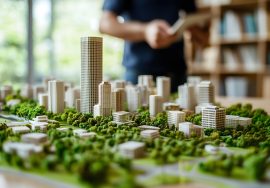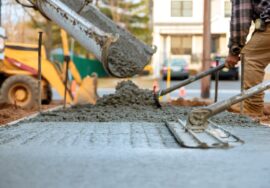
Biophilic Design: Connecting Nature with Modern Spaces
Biophilic Design: Connecting Nature with Modern Spaces
In today’s fast-paced urban world, people spend nearly 90% of their time indoors — away from natural light, fresh air, and greenery. This growing disconnect has inspired a new architectural movement called biophilic design — an approach that integrates nature directly into the built environment.
By combining natural elements with modern architecture, biophilic design promotes wellness, productivity, and sustainability. It’s not just a trend — it’s a shift toward creating spaces that nurture both people and the planet.
What Is Biophilic Design?
Biophilic design stems from the concept of biophilia, which means “love of nature.” It’s based on the idea that humans have an innate connection to the natural world and that bringing nature into our living and working environments improves our well-being.
This design approach uses materials, colors, patterns, and layouts inspired by nature — like natural light, water features, plants, and organic textures — to create spaces that feel alive and calming.
Incorporating biophilic design into architecture doesn’t just beautify spaces; it enhances comfort, mental health, and overall environmental performance.
Key Elements of Biophilic Design
A successful biophilic design blends nature into every layer of architecture — visually, physically, and experientially. Here are its key elements:
1. Natural Light
Maximizing daylight through passive design strategies reduces reliance on artificial lighting and supports human circadian rhythms.
2. Greenery and Plant Life
Indoor plants, green roofs, and vertical gardens improve air quality and bring visual calm to busy urban spaces.
3. Natural Materials
The use of green materials like wood, bamboo, and stone strengthens the natural aesthetic and reduces carbon footprint.
4. Water Features
Incorporating water bodies, fountains, or reflective pools enhances the sensory connection to nature.
5. Organic Forms and Patterns
Curved lines, textures, and natural patterns mimic nature’s geometry and create soothing environments.
6. Views of Nature
Strategic window placement and open layouts provide visual access to greenery and natural landscapes, reinforcing the connection between people and their surroundings.
Benefits of Biophilic Design
Integrating biophilic design offers numerous social, environmental, and economic advantages:
-
Enhanced Well-Being: Exposure to nature reduces stress, boosts mood, and increases focus.
-
Improved Indoor Air Quality: Plants help filter pollutants, ensuring cleaner air indoors.
-
Energy Efficiency: Natural lighting and ventilation reduce energy consumption.
-
Sustainability: The use of eco-friendly design principles supports environmental conservation.
-
Increased Productivity: Studies show that workplaces featuring biophilic design improve employee satisfaction and performance.
Whether applied to homes, offices, or public buildings, biophilic design creates healthier and more inspiring environments.

Biophilic Design in Indian Architecture
India has long embraced nature-inspired architecture — from ancient stepwells that used passive design for cooling to courtyards that enhanced ventilation and daylight. Modern Indian architects are reviving these traditions through biophilic design principles.
Buildings like the Infosys Pocharam Campus in Hyderabad and the Suzlon One Earth headquarters in Pune are excellent examples. They feature open spaces, natural ventilation, solar panels, and greenery that blend modern technology with sustainability.
For more insights into India’s green architecture movement, visit the Indian Green Building Council (IGBC) — a national authority promoting sustainable and biophilic practices.
How to Incorporate Biophilic Design
If you’re planning a new project or renovating an existing space, here’s how you can integrate biophilic design effectively:
1. Maximize Natural Elements
Use plants, natural light, and water features to create an environment that feels alive.
2. Choose Sustainable Materials
Opt for locally sourced green materials that reflect the natural environment.
3. Design for Air and Light
Improve indoor air quality with ventilation and open layouts that invite daylight.
4. Blend Indoors and Outdoors
Use large windows, balconies, and terraces to create seamless transitions between inside and outside spaces.
5. Use Smart Technology
Integrate smart building technology for temperature and light control while maintaining energy efficiency.
For professional support in designing nature-inspired spaces, contact AMS India. Their team specializes in sustainable and biophilic concepts that bring the beauty of nature into modern architecture.
The Future of Biophilic Design
The rise of biophilic represents more than a style choice — it’s a response to environmental and psychological needs. As urbanization increases, reconnecting people with nature will be vital for health, productivity, and sustainability.
Architects and developers who embrace biophilic today are building not just structures, but experiences — ones that harmonize humanity with nature.
Conclusion
Biophilic is redefining modern construction by blending sustainability with sensory wellness. From improved air quality to emotional balance, the benefits are undeniable.
By embracing biophilic , we can transform our built environments into living ecosystems that heal, inspire, and sustain — ensuring a greener and more balanced future for generations to come.
Read more related articles to enhance your knowledge and make informed decisions
Cost-Effective Modular Construction: Fast, and Sustainable Building Solutions
Smart Modular Buildings: Innovative, Efficient, and Sustainable Construction








